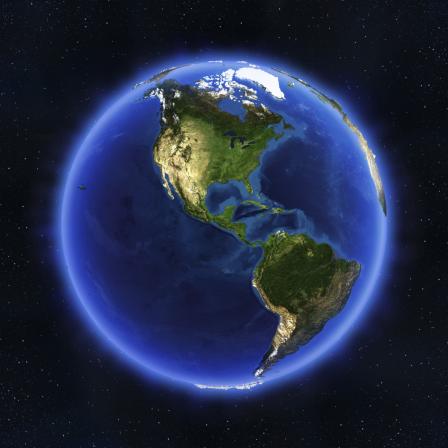Underlying Science for Climate Change Adaptation
Underlying science documents are grouped by interest to help communities and individuals to better understand the science of climate change and guide adaptation efforts.

Air Quality
An increase in temperature may increase the amount of ground-level ozone in some regions. The intensity and frequency of wildfires is increasing with warmer temperatures and droughts. These conditions can complicate those working to achieve outdoor air quality standards. Extreme weather conditions associated with climate change, such as more frequent and intense storm events, can threaten indoor air quality.
- U.S. EPA. Assessment of the Impacts of Global Change on Regional U.S. Air Quality: A Synthesis of Climate Change Impacts on Ground-Level Ozone (An Interim Report of the U.S. EPA Global Change Research Program).
- Climate and Health Assessment: Air Quality Impacts
Water Management
- EPA Climate Impacts on Water Resources Website – Website detailing how warming temperatures, changes in precipitation, and sea level rise have affected and will likely continue to affect water supply and quality.
- EPA Climate Impacts on Coastal Areas Website – Website detailing how sea level rise, changes in the frequency and intensity of storms, increases in precipitation, and warmer ocean temperatures may affect the health of coastal environments.
Waste Management & Emergency Response
Some extreme weather and climate events have increased in recent decades. Extreme weather may complicate contaminated site management, threaten the effectiveness of cleanup efforts, and increase the need for disaster debris management.
Public Health
Climate change threatens human health and well-being in many ways, including impacts from increased extreme weather events, wildfires, and decreased air quality.
- National Climate Assessment – Public Health
- The Impacts of Climate Change on Human Health in the United States: A Scientific Assessment:
Adaptation Planning
Many states, cities, businesses, and federal government agencies have realized the importance of reducing the harm climate change can cause and have begun developing their own adaptation plans and adopting policies that strengthen resiliency.
Adaptation Planning Processes
Sector-Based
- U.S. Climate Resilience Toolkit – Topics
- U.S. General Services Administration – Sustainable Facilities Tool – Information on efficient building operations, green buildings, and sustainable purchasing
If you want to know more about climate change science…
- U.S. Global Change Research Program's National Climate Assessment – The National Climate Assessment summarizes the impacts of climate change on the United States, now and in the future.
- U.S. Global Change Research Program's National Climate Assessment – Adaptation – Adaptation planning is occurring in the public and private sectors and at all levels of government but few measures have been implemented.
- U.S. Global Change Research Program's – Climate and Health Assessment – Climate change is a significant threat to the health of the American people. This scientific assessment examines how climate change is already affecting human health and the changes that may occur in the future.
- EPA webpage on Climate Change Science
- EPA's Endangerment and Cause or Contribute Findings for Greenhouse Gases under Section 202(a) of the Clean Air Act; Final Rule (2009) – The EPA Administrator finds that six greenhouse gases taken in combination endanger both the public health and the public welfare of current and future generations.
- U.S. Climate Resilience Toolkit – The U.S. Climate Resilience Toolkit provides scientific tools, information, and expertise to help people manage their climate-related risks and opportunities, and improve their resilience to extreme events.
- U.S. Climate Data Portal – The U.S. Climate Data Portal provides data, tools, and resources to conduct research, develop web and mobile applications, design data visualizations, and more.
- Intergovernmental Panel on Climate Change (IPCC) Exit– The Fifth Assessment Report (2014) provides a clear and up to date view of the current state of scientific knowledge relevant to climate change.
